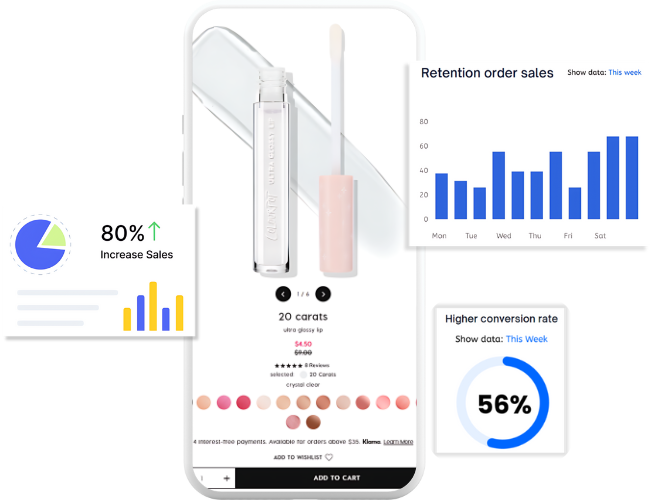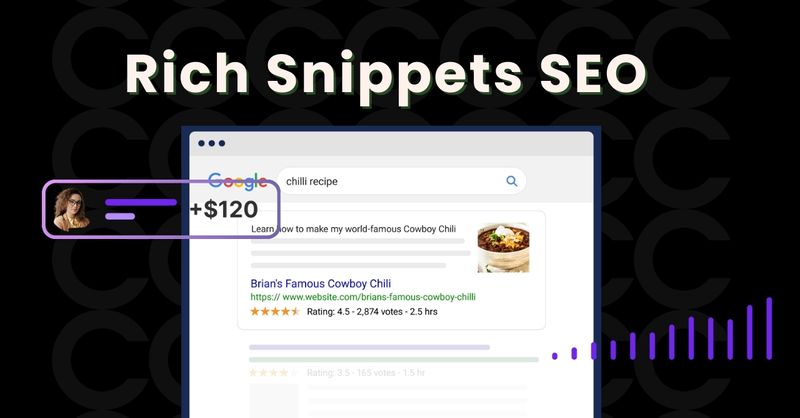Shopify is one of the most commonly used platforms for online e-commerce. It helps merchants with tasks such as store setup, order processing, and monitoring logistics. Due to its simplicity and versatility, Shopify is the platform of choice for many e-commerce merchants. However, Shopify also has some limitations, such as a single payment method and usage price. You may also get bored and dissatisfied if you use Shopify all the time. In this post, we will introduce you to the 10 best Shopify alternatives for 2025.
What is Shopify?
Shopify is a SaaS platform that meets the diverse needs of global merchants. It provides more than 100 selected templates, tons-of website-building applications,multi-language and multi-currency support, and other tools and services for the whole chain of brands going overseas. Merchants with zero programming experience can easily build websites and efficiently start cross-border business anytime, anywhere. Shopify is also a comprehensive commerce platform that offers a full range of solutions for brands. It can help merchants better manage their daily business operations and management, from website building to marketing to shipment management.
Shopify is the preferred choice of many e-commerce players when opening an online store. But at the same time, it has some limitations. For example, some excellent features require payment and a single payment method.
Why should you learn about Shopify alternatives?
Difficulty in transferring backups
Shopify is not an open-source site, which means that merchants have editing rights to their data, but not full ownership. Using Shopify doesn’t mean you’ll always use Shopify in the future, and it’s hard to transfer your data in case a better shopping cart program comes along. If you want to migrate the site, the only way you can do it now is to post-export the products in CSV format, then open another Shopify and re-import the products, but the blog content, return policy, and other pages will be hard to recover.
Shopify single payment method
Shopify does not support third-party transactions. However, it is difficult for merchants in some countries and regions to adopt Shopify Payment because the opening of Shopify Payment requires a U.S. ID card and a U.S. bank account number corresponding to the ID card for verification. This means that in addition to the basic monthly fee, these merchants will need to pay Shopify an additional 0.5–2% transaction fee if they generate a transaction.
High transaction fee
Shopify charges users a transaction fee of 0.5%–2% of their plan in addition to the monthly subscription fee unless you use Shopify Payments as your payment method, in which case all of your transaction fees will be exempt.
Additionally, while Shopify offers over 1,400 apps to extend the functionality of your online store, many apps are not free and charge you a monthly fee for their use. This can keep your costs high.
The 10 Best Shopify Alternatives
The Best 10 Shopify Alternatives
- BigCommerce
- WooCommerce
- Magento
- Volusion
- 3dcart
- Squarespace
- Ecwid
- PrestaShop
- BigCartel
- Wix
BigCommerce
BigCommerce can support and create large online stores. Compared with Shopify, it provides numerous functions, such as payment methods. For e-commerce novices, it is also friendly and a strong Shopify competitor.
Unlike Shopify, which only provides 15 employee accounts with the highest privileges, BigCommerce provides unlimited accounts with all privileges. BigCommerce does not offer any internal payment methods. However, you can integrate with various payment gateways without paying any transaction fees. The only cost you need to pay comes directly from the processor.
BigCommerce provides a single-page order for all pages. For Shopify, this feature is only available in add-ons. Besides, with BigCommerce, you can use up to 600 product variants. You can also do this through Shopify, but you need to download a separate application.
What’s more, BigCommerce has been better optimized for SEO, which makes your website ranking in Google easier. Also, with Shopify, you can only get gift cards and reports after purchasing Shopify products. BigCommerce also provides this function for it.
But there are several cons: Every sales plan has a limit on how much money you can earn each year. If you make money, BigCommerce will automatically upgrade your plan to one that can increase your income. When using Shopify, there are no sales restrictions on any of its plans.
Also, BigCommerce has fewer applications and templates than Shopify. Because Shopify has a larger ecosystem and user base, there are more creators to build applications and templates.
WooCommerce
Unlike Shopify and BigCommerce, WooCommerce is a plug-in for the WordPress website, which enables you to conduct e-commerce transactions on the most popular content management system in the world. This means that you need a WordPress website to install it.
Although only available on WordPress, WooCommerce has a larger market share than Shopify (21% compared with Shopify’s 18%).
If you want to make profits from a WordPress blog or just use WordPress to support your e-commerce store, WooCommerce is your Shopify alternative product.
It only takes 5 simple steps to set up WooCommerce, and then you can completely control your website. If you want to change something, no one will kick you out because you don’t follow the rules. Secondly, WooCommerce supports popular payment options, such as Stripe and PayPal, and there is no transaction fee.
The WooCommerce plug-in is free. If you need other functions, you can buy more plug-ins at once without paying monthly. It is based on WordPress, which is mainly built for blogs. Running your e-commerce store with your blog has an excellent SEO effect.
But you should notice that WooCommerce is a WordPress plug-in and cannot be installed on any website that is not running on WordPress. What’s more, with WooCommerce, you need to know all the technical aspects of building and running an e-commerce store. This may be difficult for beginners, and you may eventually need to hire developers.
Magento
Like WooCommerce, Magento is a free and open-source platform. Some of the largest retailers in the world, such as Samsung and Nespresso, use it, but they also provide services for countless small e-commerce stores.
It provides a variety of functions, and the platform has almost no shortcomings. Having said that, the software is very complicated and may be difficult for new store owners to navigate.
Either way, Magento ranks third in terms of its popularity in replacing Shopify and WooCommerce. The functions provided by Magento far exceed those of Shopify. It provides integrated checkout, payment, and more international transportation and payment options. It also includes instant purchase, site search, and a lot of market expansion.
You can control the way the store operates without restrictions. Besides, Magento has countless customization options to help your store stand out. Personalization on Shopify can be very limited.
At the same time, you should pay attention to the limitations. Magento is complex software that may require a lot of development resources to get started. For a mature company, this may be no problem. For those who just started, there may be some headaches. Because of the long study time, you may not be able to make an immediate profit.
Secondly, in addition to the potential cost of hiring developers to help you run the Magento store, corporate customers may want to spend $15,000 or more on software every year.
Volusion
Volusion began to set foot in this field as early as 1999, and it has existed in the e-commerce market longer than Shopify and most other alternative companies like Shopify.
It provides similar functions to Shopify at the same price. But with years of experience at independent stations, it may provide more services.
Volusion has many tutorials and courses to teach you how to get started. It also has built-in introductory materials and professional customer service without any extra cost.
With Volume, your site is hosted on its server and optimized for fast loading.
Volusion’s dashboard is very clear and easy for beginners to use, but it also provides enough choices for more complex e-commerce sites. Volume is included in all its planning pages, and payment is provided by PayPal, Stripe, and its volume.
If you decide to use Volusion’s payment system, you need to pay a 2.15% fee plus a handling fee of $0.30 per transaction. The theme of the volume is almost fixed in stone. Unless you are an HTML or CSS wizard, it is difficult to customize them, which is not easy if you are an individual business owner. Shopify provides a drag-and-drop generator, so you don’t need any coding skills.
With the development of the website, you will need more functions. Volusion has a huge add-on app store, so it is an excellent Shopify competitor.
3dcart
3dCart is very similar to Shopify in terms of plan and price. It is also a hosted solution, so you don’t have to install any software or deal with any server-related problems. In this way, you can focus on drainage.
The transaction cost is controllable on 3dcart; you don’t have to pay the transaction cost, like using Shopify. Moreover, you can connect to 100 different payment processors. 3dCart provides 200 built-in functions. In addition, all plans provide necessities such as one-page checkout, domain registration, product and customer reviews, reports, dashboards, saved shopping carts, coupons, discount codes, and so on.
3dcart provides a Startup Store, which is $10/month cheaper than Shopify’s basic plan. For those who don’t want to spend a lot of money at first but still want to use powerful functions, this plan is an ideal choice.
To customize the store with 3dcart, you need to know HTML and CSS. You can customize the content according to your own needs without getting stuck in an unchangeable theme like Shopify.
These advantages are very attractive, but the reality is that you need to have a certain programming foundation before using 3dcarts. If you don’t know HTML or CSS, you can only choose one of the themes on 3dCart, and their appearance is hardly as modern as Shopify’s.
The various plans provided by 3D Cart are much cheaper than Shopify. Therefore, if saving money is one of your priorities, then 3dCart may be your best alternative to Shopify.
Squarespace
Like Shopify, Squarespace is a web builder for e-commerce enterprises. Without any coding knowledge, you can use Squarespace’s modern templates to compose beautiful websites. You can also use Squarespace to create a blog.
Squarespace is famous for its amazing visual design templates, which is why photographers, artists, and designers like the platform. It also has many built-in features that support blogs. If you use many high-quality images and illustrations in your blog posts, you can also use Squarespace.
As mentioned above, Squarespace provides a modern template, which can provide you with the best storefront in the city and is more creative than Shopify. Squarespace also has a simple editing tool that can easily create desktop and mobile websites.
Squarespace provides plans for a variety of businesses, and there are two plans specifically for e-commerce. With Squarespace, you can upload product videos to attract users.
Since Squarespace only allows 2-level menus, it may be a bit tricky for large stores that sell a lot of goods in different departments. It doesn’t have an app store or any plug-in system, which means you can only use the attached content.
Like Shopify, you don’t have 100% control over the content. If you violate Squarespace’s terms, your website may be deleted within one second without warning. Squarespace’s advanced business plan is much cheaper than Shopify’s. However, Shopify may make up for this difference through its available functions and the possibility of an app store.
Ecwid
Ecwid is an e-commerce widget that can be used on almost any website. It is easy to set up and start using. All you need to do is add the product to the management panel and copy and paste a few lines of code.
In terms of price, Ecwid is quite competitive. If you are a small e-commerce store and plan to sell 10 items or less, Ecwid is a completely free Shopify alternative. It provides automatic updates, real-time freight, unlimited bandwidth, and the ability to sell digital goods. If you already have an online business and want to start selling, Ecwid is a lightweight and direct solution.
The biggest disadvantage of Ecwid is that it has few functions. Moreover, due to the basic function and design tools, the possibility of drainage is very small.
Ecwid offers 4 membership levels. The free version allows you to sell up to 10 items on the website. However, if you want to expand slightly, you need a paid plan. This Shopify substitute is much cheaper than Shopify. But again, it is just a widget, and if your goal is to develop a huge e-commerce business, then this may not be suitable for you.
PrestaShop
Like Magento and WooCommerce, PrestaShop is a self-hosted platform, so you can use it on almost any site you need. It has all the e-commerce functions needed for a successful e-commerce store.
PrestaShop is super easy to use. After logging in, you will see various functions. Unlike Shopify, it takes a while for Shopify to discover the available functions. PrestaShop caters to those who want to sell internationally. You can add different languages and currencies, and choose international transportation and taxation.
Besides, PrestaShop provides setup guides, technical help, and even business development skills. It contains 10,000 free and paid themes, modules, and services.
Although PrestaShop has a lot of functions, its template design lacks professionalism. You can get the Shopify store up and running in a few hours, but PrestaShop may take more time. After setting it up, a lot of maintenance is needed.
PrestaShop has many additional components, but it is expensive. For example, if you need Amazon and JA Marketplace integration, the plug-in will cost $217. Most plug-ins cost between 55 and 110 dollars.
BigCartel
BigCartel has attracted many people among entrepreneurs and small businesses, mainly because of its reasonable price. One of the best functions of BigCartel is to integrate with Google Analytics, Facebook, and PayPal without any coding.
Also, its cost is quite low. BigCartel does not charge any transaction fees. Anyone with five or fewer products has a free plan.
BigCartel is not suitable for large companies due to its limited functions. It does not provide telephone or live chat support, which will make it difficult to solve any technical problems. What’s more, there is no inventory search function. The search function is very important to customers because many users will know exactly what they are looking for when they log on to the website.
Wix
Wix has served more than 100 million people in 190 countries and regions and has had an impact all over the world.
Regardless of your technical level, Wix’s user-friendly template editor can fully satisfy you. You can create a beautiful and professional website at a low cost.
Wix provides more than 280 kinds of applications and plug-ins, which can be embedded in real-time chat, social media, coupons, and so on. There are HTML codes, light boxes, and button styles that provide countless customization options.
You can use the free version if you have no problem with the Wix brand on the website. Unless the website is to become a household name in the world, Wix has many options to promote the website.
However, Wix doesn’t have as many applications as Shopify. Wix has not yet provided a plan with unlimited bandwidth and storage space. Although you can contact someone to help you optimize your website, the technology they use is somewhat outdated.
How To Choose the Best Shopify Alternative
Before choosing an e-commerce platform, you need to be clear about where to position yourself. Most of the features offered by Shopify and its alternatives are not really that different, but they each have their strengths and weaknesses.
If you are new to e-commerce, you may want a newbie-friendly platform with lower fees and tutorials, such as BigCommerce, 3dcart, Ecwid, PrestaShop, or Wix.
For veterans, you may need more and freer functionality, so you can prioritize WooCommerce, Magento, and other alternatives. 3dcart, etc.
If you want to save money, you can consider the free Shopify alternatives or have free programs like WooCommerce, BigCartel, Wix, and Magento.
Final Words
Overall, if you’re tired of using Shopify or have more needs, it’s time to consider some alternatives to Shopify. Choose the e-commerce platform that best suits your needs and build a store that best fits your business. If you need more features and information, read the Channelwill homepage for more information and tools.
FAQs
Note: This blog was originally written in English and translated using an automated tool to make the content accessible to a global audience. We believe in sharing valuable insights with everyone and apologize for any inaccuracies. If you spot any errors, please feel free to contact us for corrections. Your feedback helps us improve and ensures the content’s value is fully realized.





